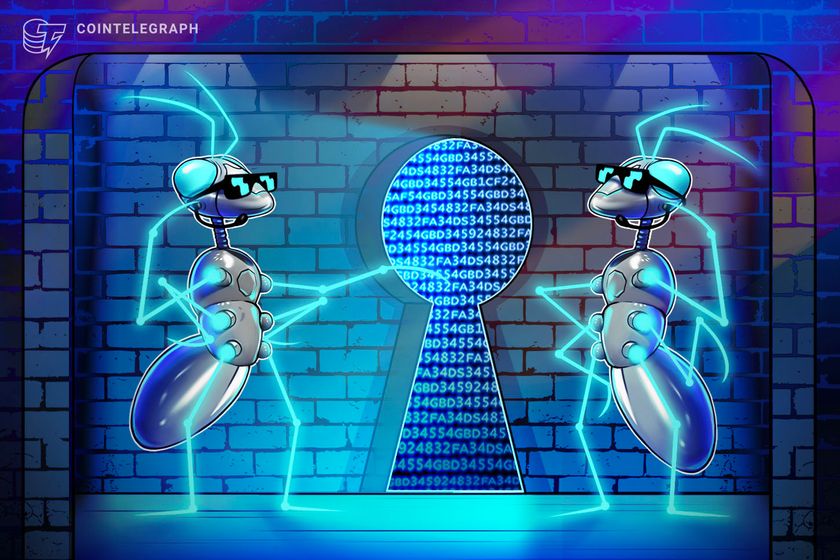
Opinion by: Eran Barak, CEO at Midnight
It’s been virtually 16 years since blockchain emerged from its esoteric fringes to enter international discourse, evidenced most just lately by continued backing from Wall Road incumbents. Regardless of this outstanding ascendancy, the unlucky fact is that this expertise has but to appreciate its true enterprise potential. A core problem persists: An excessive amount of delicate information stays publicly unshielded.
The crux of the problem is that corporations should hold enterprise information confidential, and other people try to safeguard their private data as greatest they will. As soon as information is placed on a public blockchain, nonetheless, it turns into irreversibly and indefinitely uncovered.
Even when a enterprise takes each doable precaution to hide information, errors made by others or vulnerabilities within the system can expose delicate onchain information or metadata, together with members’ identities. This could result in privateness breaches, compliance violations or each, undermining the foundational assumption that blockchain is trusted and underscoring the significance of sturdy measures to guard delicate information.
On the opposite facet of that coin, concealing exercise on a blockchain can open the door to cash laundering, triggering detrimental authorities responses. Cases during which this has occurred have led to a misunderstanding that governments oppose Web3 privateness, a criterion companies basically want for them to undertake the expertise.
From whichever angle we have a look at it, sustaining privateness onchain is an actual and sophisticated difficulty for Web3. Till we remedy it, companies is not going to and shouldn’t be anticipated to cross the chasm.
The assumption that governments oppose privateness on the blockchain is incorrect
Web3 entrepreneurs have grown to concern that constructing decentralized functions and companies that present monetary anonymity may land them in regulatory bother. Simply have a look at Samourai Pockets, whose co-founders were charged with money laundering, or Twister Money, whose developer was sentenced to 64 months in prison for related causes.
These responses have led to a consensus that governments are against privateness altogether with regards to blockchain.
Current: AI agents and blockchain are redefining the digital economy
This couldn’t be farther from the reality. Governments don’t oppose privateness however mandate it throughout industries. Information safety legal guidelines, just like the Common Information Safety Regulation or the Well being Insurance coverage Portability and Accountability Act, are in place to make sure companies shield our buyer information from misuse and safety threats.
The true difficulty these high-profile circumstances reveal is that Web3 measures to guard information have created alternatives for misuse, enabling the facilitation of legal actions which have understandably raised severe issues on behalf of governments. Blockchain information safety capabilities mustn’t undermine established cross-jurisdictional legal guidelines safeguarding the worldwide neighborhood from terrorism, human trafficking, fraud and different legal offenses.
This begs the query: What does privateness, performed proper, appear to be?
Selective disclosure
In the case of utilizing blockchain, defending delicate information is usually completed by both conserving the information offchain, or encrypting information onchain. The latter shouldn’t be sturdy privateness given quantum computing’s fast advances in cracking encryption.
The appearance of zero-knowledge (ZK) expertise, a posh cryptographic method, permits customers to make sure delicate information stays offchain by sharing attestations concerning the validity of the information as an alternative. In Web3, ZK has emerged as a transformative solution to improve privateness because it allows untrusted events to validate {that a} transaction has occurred with out sharing any details about the transaction.
Decentralized functions can train selective disclosure by selecting between placing information onchain (full disclosure), placing it onchain with encryption (disclosure by way of viewing keys) or utilizing ZK to solely publish attestation concerning the information (providing utility with none disclosure). Selective information disclosure solely solves half of the puzzle. It was not designed to account for metadata.
The subsequent privateness frontier
Metadata, the knowledge surrounding our information, is an under-discussed part of blockchain’s publicity of delicate data; it may be used to make inferences, creating an added layer of vulnerability even when the information itself is hid.
For instance, by way of transaction metadata, funding and buying and selling methods will be inferred along with different behavioral patterns. For companies, the implications of this may be detrimental to their development and skill to remain forward of rivals. They’ll’t afford to have commerce secrets and techniques and methods, and even the identities of different events they’re transacting with, made public.
The necessity to shield metadata and take away the power to make inferences is paramount to safety and will be addressed utilizing a non-public token. Such functionality can, nonetheless, be simply misused for cash laundering.
If utilizing a non-public token shouldn’t be the answer, and utilizing a public token doesn’t present enough ranges of confidentiality, then the way in which to unravel this problem is to rethink Web3’s strategy to defending metadata altogether. We have to mix the advantages of each approaches, successfully making a dual-asset system during which a public and a non-public token are used. Every asset features independently, which means particular restrictions will be positioned to stop illicit actions akin to cash laundering whereas retaining all the advantages.
A strong framework
The twin-asset system allows confidentiality with out the illnesses shielding metadata normally brings, making compliance and enterprise coverage enforcement doable. By combining this tokenomics construction with selective disclosure, privateness and regulatory compliance can coexist on the blockchain, which may have resounding results on adoption and innovation.
Opinion by: Eran Barak, CEO at Midnight.
This text is for basic data functions and isn’t meant to be and shouldn’t be taken as authorized or funding recommendation. The views, ideas, and opinions expressed listed here are the creator’s alone and don’t essentially replicate or symbolize the views and opinions of Cointelegraph.












